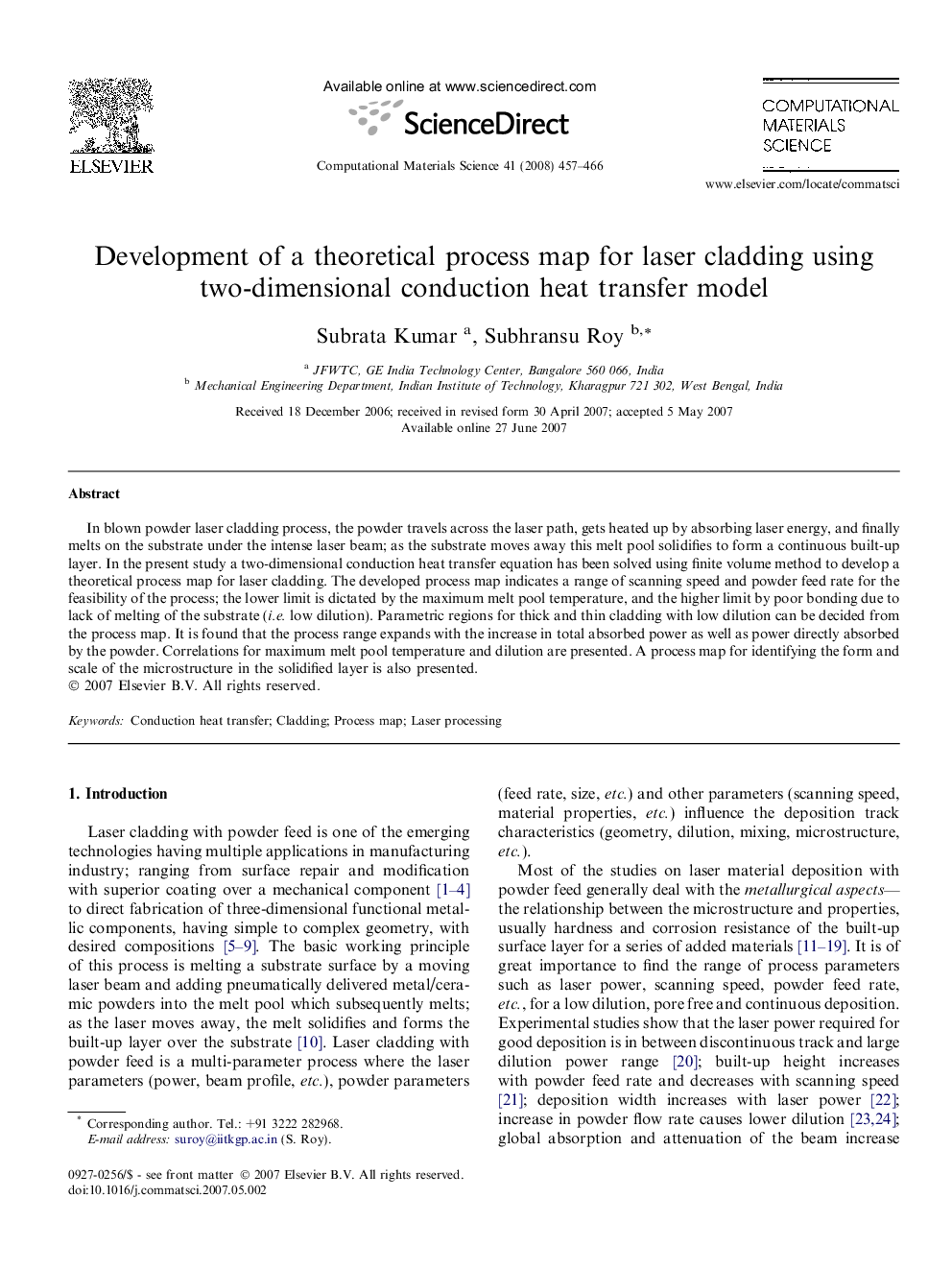| Article ID | Journal | Published Year | Pages | File Type |
|---|---|---|---|---|
| 1564037 | Computational Materials Science | 2008 | 10 Pages |
In blown powder laser cladding process, the powder travels across the laser path, gets heated up by absorbing laser energy, and finally melts on the substrate under the intense laser beam; as the substrate moves away this melt pool solidifies to form a continuous built-up layer. In the present study a two-dimensional conduction heat transfer equation has been solved using finite volume method to develop a theoretical process map for laser cladding. The developed process map indicates a range of scanning speed and powder feed rate for the feasibility of the process; the lower limit is dictated by the maximum melt pool temperature, and the higher limit by poor bonding due to lack of melting of the substrate (i.e. low dilution). Parametric regions for thick and thin cladding with low dilution can be decided from the process map. It is found that the process range expands with the increase in total absorbed power as well as power directly absorbed by the powder. Correlations for maximum melt pool temperature and dilution are presented. A process map for identifying the form and scale of the microstructure in the solidified layer is also presented.
